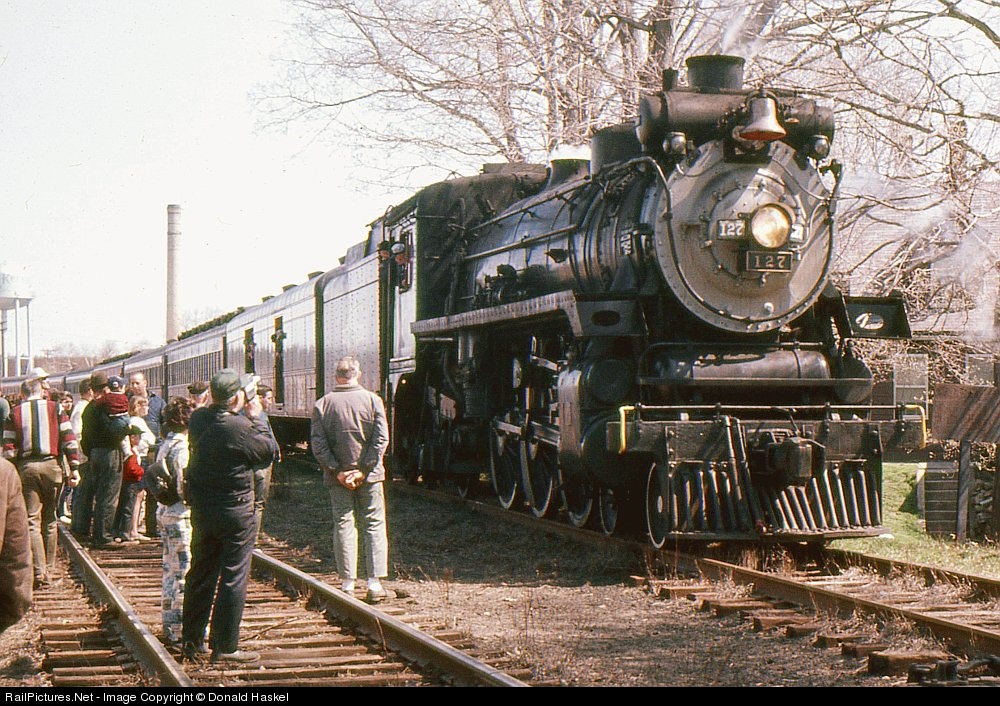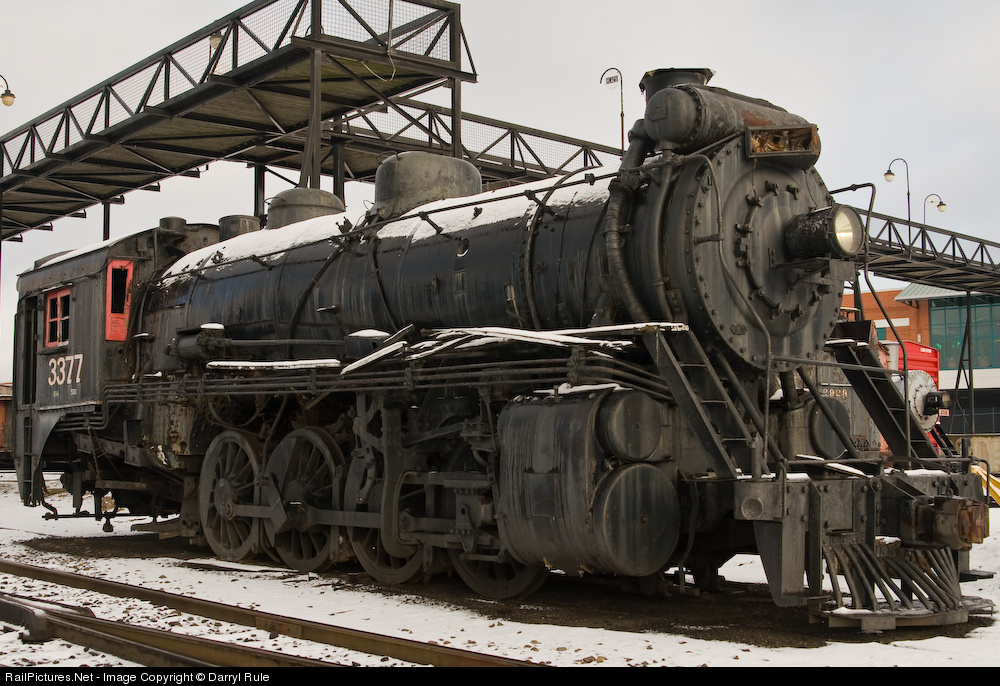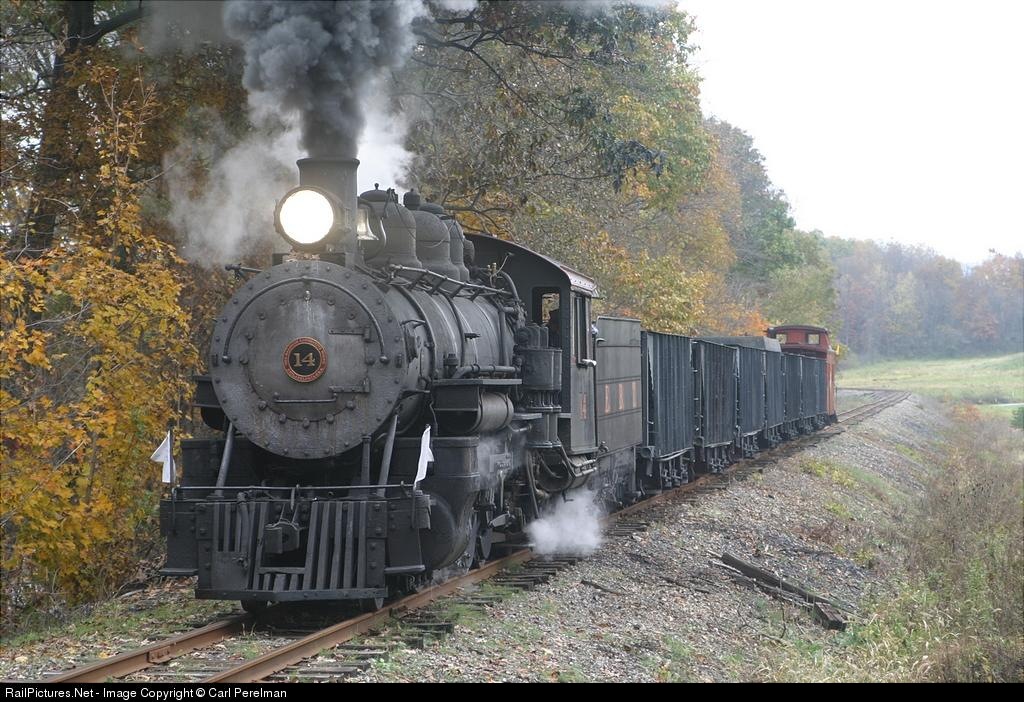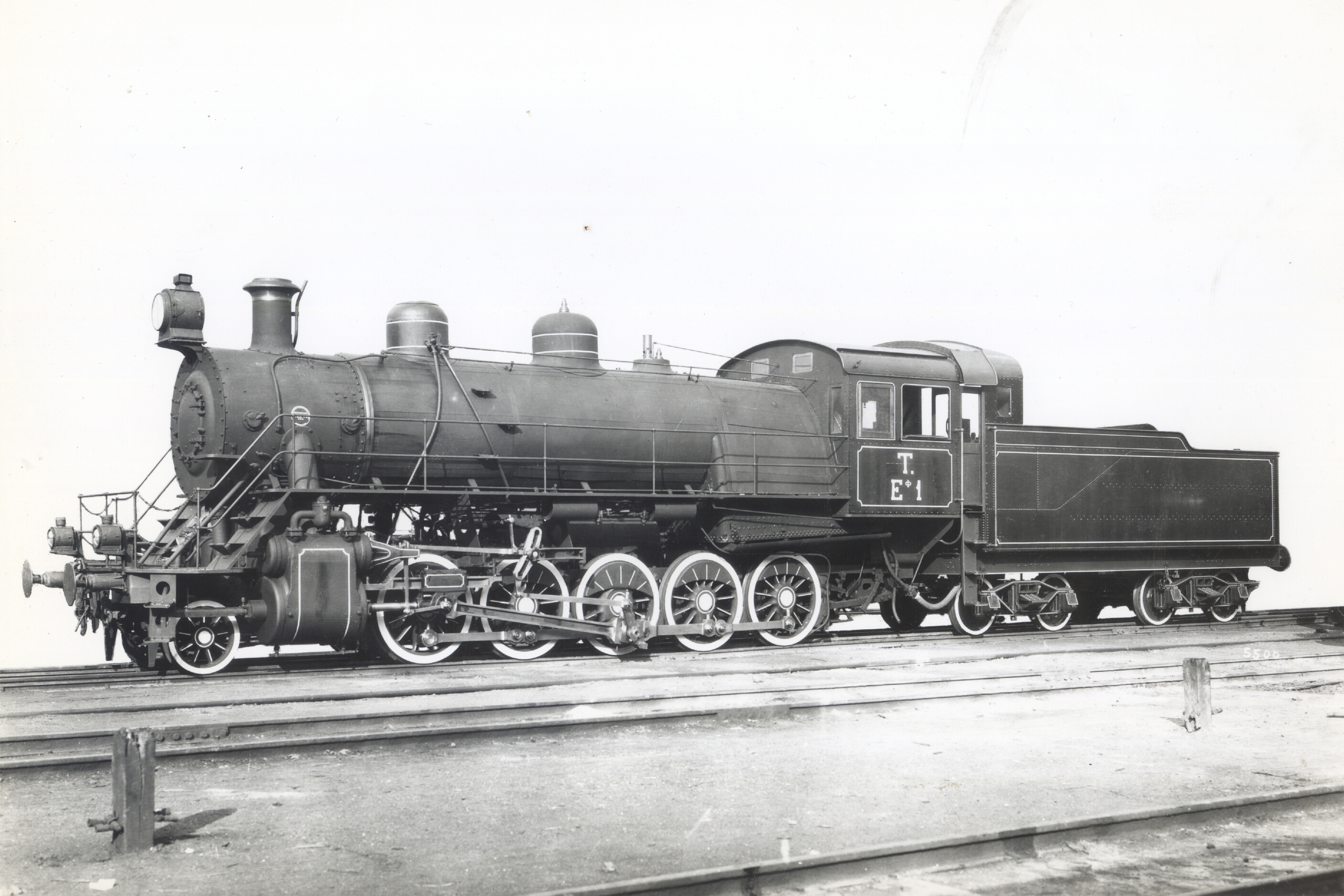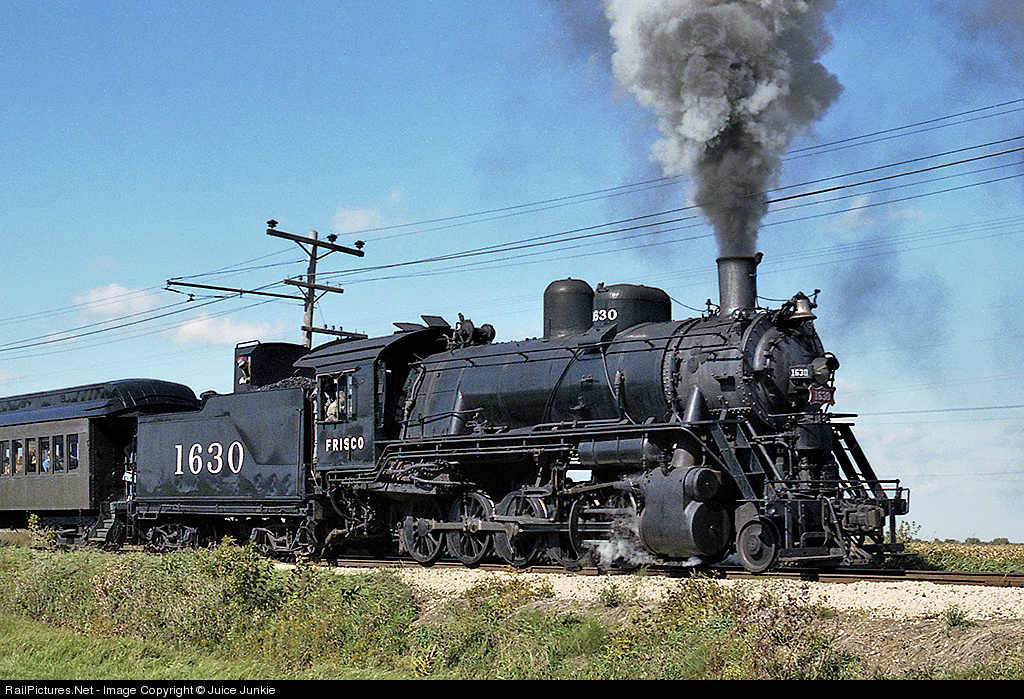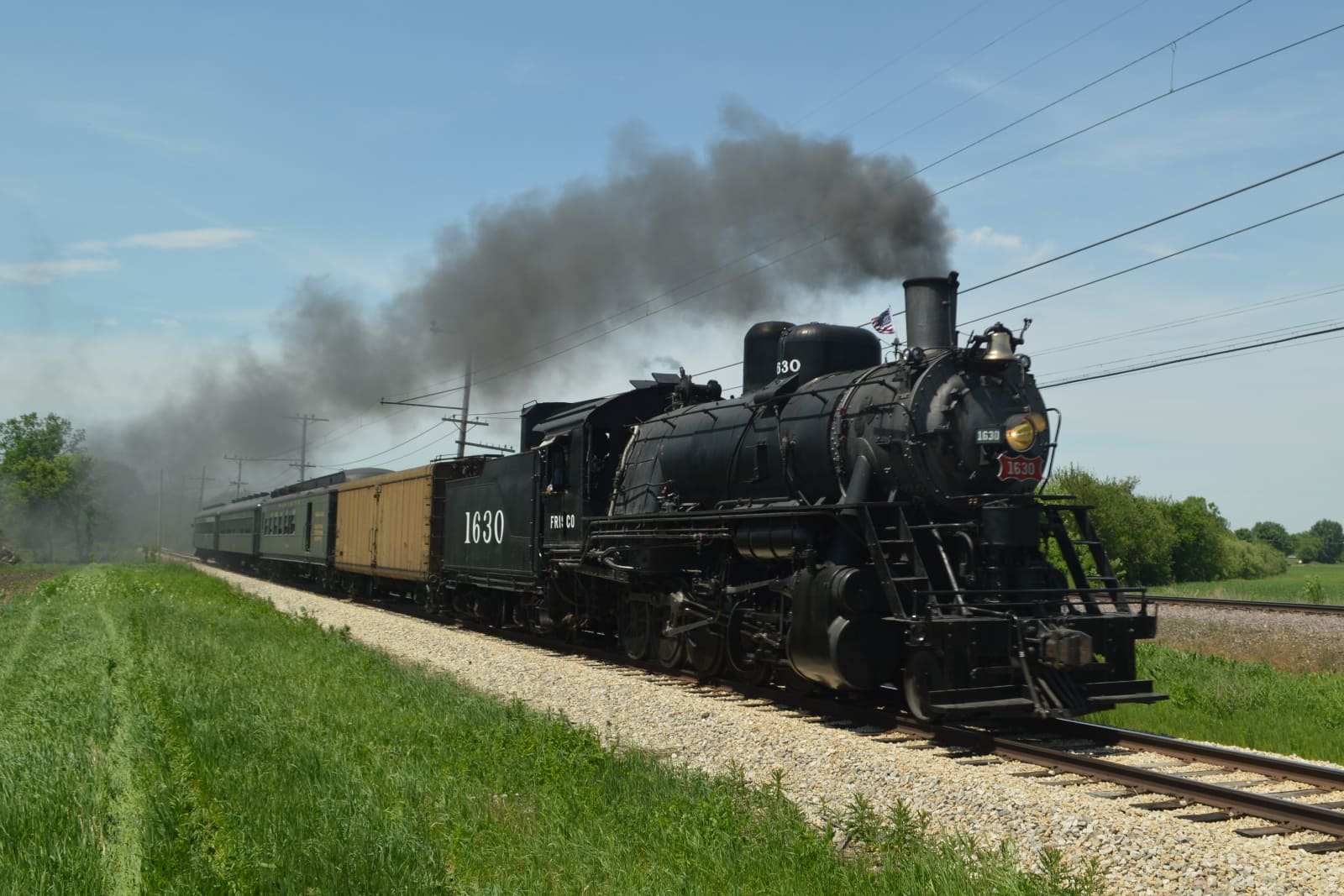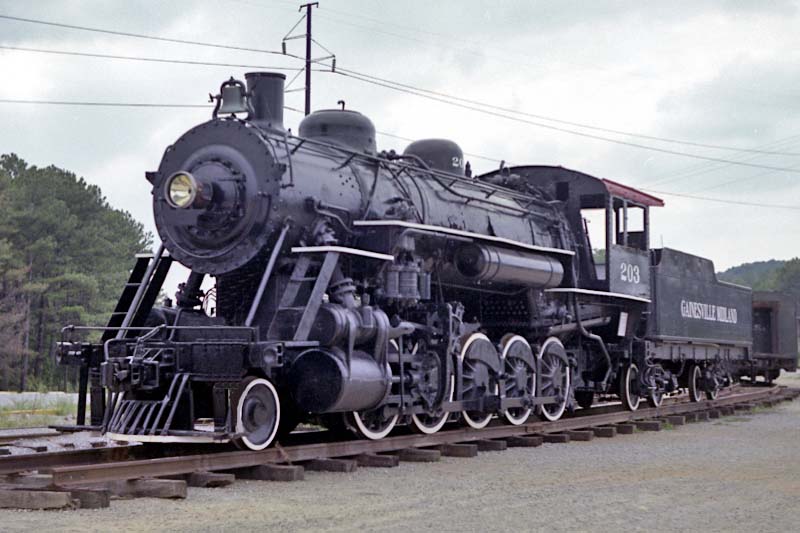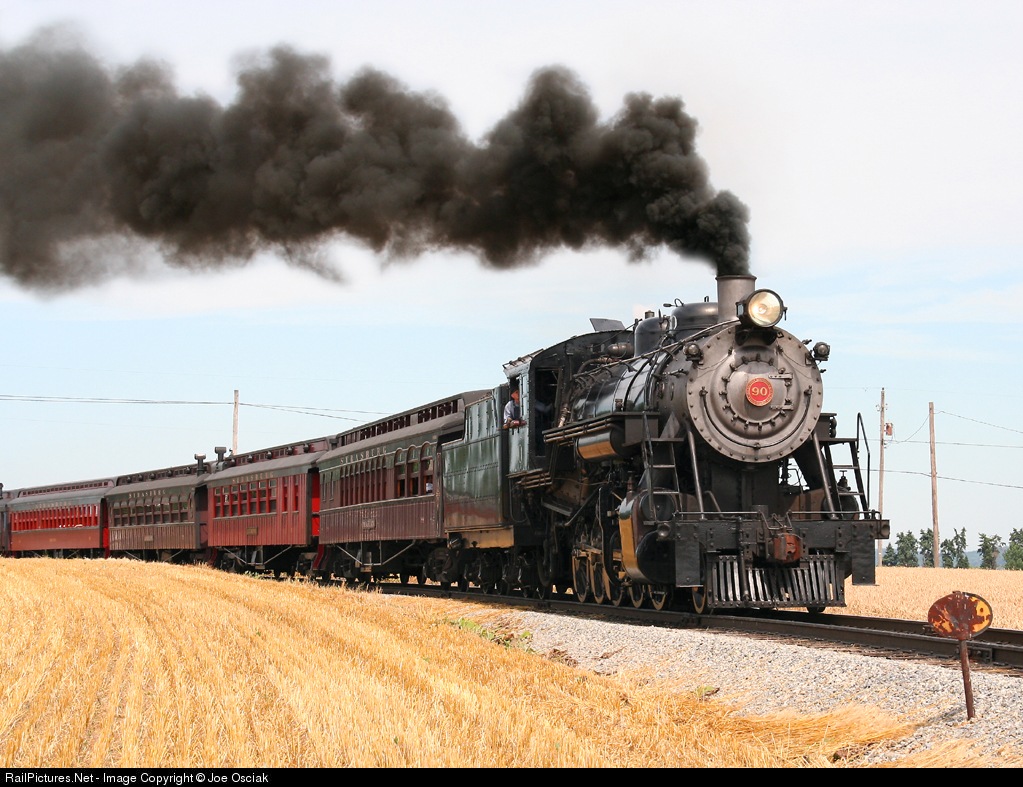Wednesday was the 25th anniversary of the Gettysburg #1278 incident. This event marked the closest a steam locomotive has ever come to a boiler explosion in tourist use, and nearly closed the door on steam railroading in the US forever.

Canadian Pacific #1278 was one of 30 G5d-class Pacifics built for CP in 1948 by Canadian Locomotive Works. It led presumably a normal career with CP, as there is no history of it being involved in any collisions or pulling any noteworthy trains. It was retired sometime in the early '60s by Canadian Pacific. It was then purchased by New England seafood magnate Nelson Blount, along with G5c-class #1246 and G5d #1293, and moved them to Steamtown USA's Bellows Falls, VT location to join sister Canadian Pacific G3c #2317. Nelson Blount would have all 4 CP engines restored to operation and they would handle the bulk of Steamtown's excursions over old Central Vermont trackage. After Blount's death and Steamtown's move to Scranton, PA, the new trackage that they were using had steep grades that the CP Pacifics were not well suited for and Steamtown found itself in need of stronger motive power. None of the larger engines in their collection were operational or would work with the location (NKP Berkshire #759 for example would not fit the turntable or manage the curve out of the roundhouse). So Steamtown began to divest itself of their light Pacifics, keeping only #2317. #1278 was traded to Gettysburg Railroad for a recently restored Canadian National Mikado, #3254, with Steamtown operating the Mike to run alongside #2317 until 2010.

Gettysburg Railroad had been formed in 1976 to operate a short line between Gettysburg and Mount Holly Springs over old Reading trackage that had been adandoned by Conrail when Reading became part of the Consolidated Rail Corp. Gettysburg ran a freight operations at first, using a collection of scruffy old diesels, including a couple Alco RS3s, an ex-NYC GE U30B, a rare Alco RS36 and one of Western Maryland's homely chop-nose GP9s.



This was a real ragtag operation that was run on a shoestring budget on a branchline that had been neglected by its previous owner (the Reading had been financially ailing for years). Think weeds growing up through the ties, collection of old junk, all run by guys who weren't really that qualified to be doing this and improperly trained, trying to cut as many corners as possible. One story tells of the roadbed gravel being all gone in spots, but gravel was expensive, so instead they purchased shale to replace it. The shale immediately crushed to a fine dust, but they kept operating. Another story recounts a guy being at the Gettysburg yard and an FRA inspector swinging by and looking over their roster and immediately slapping an out-of-service order on everyone of their locomotives, for stuff like no valid FRA certification, wheel flanges worn too thin, etc. Yet another remembers being aboard one of their passenger trains, and the crew switching the loaded passenger cars on the fly (while moving, uncouple the locomotive, run it past the next switch, reverse back, switch over and couple on again without stopping, just letting the passenger cars coast to a stop) which is a big no-no. And in that photo of the GE U30B, #28, take note of that car immediately behind it. That was a double decker auto-rack that was converted to a double-decker open air gondola for passenger use. But auto-racks were sprung to support a couple tons of automobiles, so when transporting just people it had a bone-jarring ride quality and was louder than sin. Anyone who remembers Gettysburg, remembers that damn auto-rack car.
At some point, Gettysburg decided that they wanted to get into running steam excursions, and purchases a pair of steam engines. One was Huntingdon & Broad Top Mountain Coal Company 2-8-0 #38, the only surviving H&BTM steam locomotive, which they sold off some time in the 1980s to Knox & Kane Railroad. The other was Frisco #76, another Consolidation. They would later acquire Canadian National #3524 from a private owner and restore that to operation, and then in 1987 trade that off to Steamtown for Canadian Pacific #1278. Now, steam locomotives and cutting corners do not go hand-in-hand.



On June 16th, 1995, the #1278 was heading to Mount Holly with an evening train when the crown sheet (top sheet of the firebox) failed and dumped water into the firebox. This instantly flashed to steam and blew out the firebox doors into the cab. Two of the crewmembers suffered minor burns, while one was severely scalded but survived. No passengers were injured, and no one died. It is frequently stated that #1278 suffered a boiler explosion but that is incorrect. It was a crown sheet failure. A true boiler explosion likely would have killed the crew and some of the passengers and made the situation much worse. As it was, there was instant concern that this event could bring about an end to all steam locomotive operation in the US.

The FRA and NTSB immediately launched an investigation to see what exactly had happened. The #1278 had been run low on water in the boiler and that had melted the crown sheet and caused it to sag 12-18" before springing a leak. The engine was found to have a number of serious safety faults. The line from the feedwater heater to the boiler had sprung a leak, so when they were trying to add water to the boiler, a good portion was leaking out. The flow gauge for the injector (what adds water to the boiler) had failed, been replaced, failed again and then the owner had just decided to forgo it entirely and thus had no . The injector had the incorrect brass disc installed, with too small of an opening, causing it to inefficiently add water to the boiler. A thick layer of scale was found inside the boiler (which causes the water to not cool the metal properly because the scale acts as an insulator) due to insufficient water treatment facilities and none of the crew knowing how to blow down the boiler. The generator was not operational, and so the locomotive had no cab lighting, making the gauges difficult to read, particularly at night. The sight glass for the boiler water level was 85% plugged with scale, making it read incorrectly. The fact that the sight glass only fluctuated 1/2" during operation should have been a warning sign (2-4" of fluctuation over the tracks was nominal) but, again, lack of training meant that the crew wasn't aware that there was something wrong and it couldn't be trusted. And this was just issues related to the crown sheet failure. Every other mechanical part of the locomotive was in an unsafe state of disrepair as well.

The only thing that did go right was that Canadian Locomotive Company welded the crown sheet on their locomotives, unlike most manufacturers, which just riveted them. This made it stronger so that when it was overheated, the rivets didn't fail and drop the crown sheet into the firebox. This most certainly would have resulted in an off-the-frame, bundle-of-tubes boiler explosion that would have killed the crew and likely passengers. If that had happened, the banning of steam locomotive operation would have most likely happened. As it was, the FRA instituted new policies and procedures as a result. While they have increased the cost of restoring and operating steam engines, there has not been another incident like this in the US.

This put an end to Gettysburg Railroad's steam operations, and the line itself would struggle along for less than a year before closing up shop. The locomotive would linger around for several years before Jerry Joe Jacobson purchased it at an auction in 1998 and moved the engine to his Ohio Central Railroad, where it would sit in the "dead line" until 2006 when it was moved to J.J. Jacobson's Age Of Steam Roundhouse.

It has been cosmetically restored but Age Of Steam has said that the #1278 will most likely never run again. Too many years of neglect, plus the damage to the boiler and firebox, and then many more years of sitting, have done too much damage to the engine. Instead, they intend to keep it in the state it's in as an instructional tool and cautionary tale, to respect these engine for the danger they can be and that you cannot cut corners when working with them







